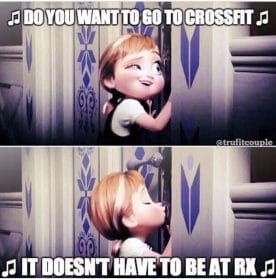[fusion_builder_container hundred_percent=”no” equal_height_columns=”no” menu_anchor=”” hide_on_mobile=”small-visibility,medium-visibility,large-visibility” class=”” id=”” background_color=”” background_image=”” background_position=”center center” background_repeat=”no-repeat” fade=”no” background_parallax=”none” parallax_speed=”0.3″ video_mp4=”” video_webm=”” video_ogv=”” video_url=”” video_aspect_ratio=”16:9″ video_loop=”yes” video_mute=”yes” overlay_color=”” video_preview_image=”” border_color=”” border_style=”solid” padding_top=”” padding_bottom=”” padding_left=”” padding_right=”” type=”legacy”][fusion_builder_row][fusion_builder_column type=”1_1″ layout=”1_1″ background_position=”left top” background_color=”” border_color=”” border_style=”solid” border_position=”all” spacing=”yes” background_image=”” background_repeat=”no-repeat” padding_top=”” padding_right=”” padding_bottom=”” padding_left=”” margin_top=”0px” margin_bottom=”0px” class=”” id=”” animation_type=”” animation_speed=”0.3″ animation_direction=”left” hide_on_mobile=”small-visibility,medium-visibility,large-visibility” center_content=”no” last=”true” min_height=”” hover_type=”none” link=”” border_sizes_top=”” border_sizes_bottom=”” border_sizes_left=”” border_sizes_right=”” first=”true” type=”1_1″][fusion_text columns=”” column_min_width=”” column_spacing=”” rule_style=”default” rule_size=”” rule_color=”” content_alignment_medium=”” content_alignment_small=”” content_alignment=”” hide_on_mobile=”small-visibility,medium-visibility,large-visibility” sticky_display=”normal,sticky” class=”” id=”” font_size=”” fusion_font_family_text_font=”” fusion_font_variant_text_font=”” line_height=”” letter_spacing=”” text_color=”” animation_type=”” animation_direction=”left” animation_speed=”0.3″ animation_offset=””]
Why do we use prescribed weights and prescribed movement variations in workouts?
SparkNotes/less winded version:
Having an RX weight and movements with each workout allows our coaches to administer and scale appropriately for the desired stimulus of each workout that is programmed and completed. Thus, allowing everyone to get a similar physiological response from the programmed workout of the day.
For all of our members, having an RX weight and movements with each workout ensures that you are inching towards long term goals and constantly trying to be better than yesterday (avoiding complacency).
Prescribed weights and/or movements also give you a better understanding of how things should feel in each workout you complete and ensures that you have the best workout possible for your current fitness level. A 135lbs deadlift certainly means and feels different than a 275lbs deadlift just like a 30 inch box jump provides a different workout than a 20 inch box jump.
I want to dig deeper and nerd out on all things Rx’d!
RX is a term usually used in medicine meaning ‘prescription’. Applied to CrossFit workouts, we use the term to determine the exact prescription of a workout, and from that the overall intent or stimulus, which can be described as the effect of a workout on our physical and psychological systems.
This is significant in that CrossFit training is not just another high intensity training program, but that each workout is in fact a careful and precise blend of movements designed to elicit a specific response from the body. This makes it necessary to have prescribed movements, loads, and reps i.e ‘RX’ so that we may define exactly what that response should be for each workout we are coaching.
One of the goals of the CrossFit coach is to ensure that every athlete gets the intended stimulus from the workout regardless of their ability level, so we scale movements, loads and reps to preserve that stimulus. The beautiful thing about the CrossFit program is that everyone can do the same workout, tailored to their specific needs, and achieve the same relative effect (stimulus). Allowing anyone, at any age and any fitness level to reap the benefits of doing constantly varied functional movements at relatively high intensity.
It’s also why you don’t have to be super fit to get started at Joust!
When scaling a workout to preserve the intended stimulus, there are a number of factors that a coach must consider, including:
-Energy system
-Loading
-Volume
-Range of motion of the movements
-Complexity of the movements
Prescribed weights are nothing you “should do” or “have to do”. Very simply, they give us a long term goal to inch towards while also allowing our coaches to better explain how movements and workouts should feel based on what prescribed weights are suggested for the workout, all with the goal of achieving the desired stimulus of the workout while keeping everyone safe and happy.
Always remember TECHNIQUE-> CONSISTENCY -> INTENSITY.
If range of motion and technique are present, try a little more weight or slightly more difficult movement in a given workout. If range of motion or technique is lost, scale back a bit and avoid moving closer to RX.
Food for Thought
Remember that our goal is to live a more functional life outside of the gym by learning and practicing functional movements inside of the gym. It’s NOT to become a professional CrossFitter or to injure ourselves doing something our body is not ready for in the present moment. Also remember that everyday is different, your body doesn’t care what workout you completed RX’d yesterday.
Wait, what, I need an example?
Here’s a workout example for you:
“Fran”
21-15-9 of:
-Thrusters (65/95lbs)
-Pull-Ups
If a 65/95lbs thruster is prescribed in the workout “Fran”, as coaches we can explain a lot of things about that weight and how it should feel and what the overall stimulus of the workout is.
We can draw from that weight and this rep scheme that 65/95lbs for “Fran” is a weight that will feel moderate and is a weight you ideally should be able to do between 12-15 unbroken repetitions while fresh. It also means your heart rate will be up as well as the intensity level due to the higher repetition sets you’ll be completing, working closer to the anaerobic glycolytic energy system.
Based on that, if we change the prescribed weight for “Fran” to 95/135lbs, we know that will feel heavy and should be a weight we could do 4-6 unbroken repetitions of while fresh. This will also lower the intensity of the workout slightly as you’ll be breaking the repetitions up more frequently which will lower the heart rate slightly. It will also mean that we will be working closer to the anaerobic phosphagen energy system with short, intense bursts of energy and 4-6 repetitions at a time used during the sets of thrusters.
These are two very different workouts working in different energy systems all by changing the prescribed workout weight.
Our coaches also give you a time goal with each workout to dial in the desired stimulus. A 65/95lbs “Fran” would have an overall time domain stimulus between 4-8 minutes with the set of 21 ideally being broken up 2-3 times, the set of 15 broken up 1-2 times and the set of 9 broken up 0-1 times. A 95/135lbs “Fran” would have a longer time goal between 8-12 minutes with the set of 21 ideally being broken 4-5 times, the set of 15 broken up 3-4 times and the set of 9 being broken up 1-2 times, it will feel heavy throughout.
Bringing this full circle:
For a member example of those weights, when example member “Joe” sees 65/95lbs as the Rx’d weight that might mean 75lbs for him because that feels moderate and is a weight he knows he can do between 12-15 unbroken repetitions with while fresh, it doesn’t mean he should automatically do RX’d weight. If he sees 95/135lbs Joe would likely use 95lbs for the workout, maybe even 105lbs if he is feeling great and proper technique and range of motion are preserved. If Joe has done “Fran” a time or two before at 75lbs and achieved the 4-8 minute goal with full range of motion, then he could try 80-85lbs this time around, moving to a new level with his health and fitness!
You can see where an Rx’d weight can really help us dial in the proper stimulus of a workout. We want the majority of members in a class and throughout the day to be within the same ballpark of stimulus for the workout of the day. It isn’t always perfect but it’s much better than just playing a guessing game each workout.
This is also where the workout app Beyond the Whiteboard comes in very very handy and makes tracking your progress super simple.
What does all of this really mean?
Without prescribed weights we would simply be guessing on what weights/movements to use for workouts and each workout would have a very similar stimuli causing us to avoid working other energy systems and even muscle groups. We would also grow complacent with the weights we use in workouts, never striving to add even a little weight (2.5lbs added to a bar every once in a while goes a long way) or added difficulty to a movement.
Longer summary of RX’d weights:
Scaling is not about making a workout ‘easier’. It is about selecting the right movements, loads and reps that allow the athlete to achieve the intended stimulus, which if done correctly can often increase rather than decrease the relative intensity of the workout.
While working toward completing workouts as prescribed, or RX, often becomes a goal for some, and while eventually being able to complete a workout as RX may represent an increase in strength, fitness and movement competency, it should not be pursued at the expense of correct mechanics, movement technique, athlete safety and the workout stimulus.
After all, our goal in training is to become more fit, functional and capable human beings and for that goal having an RX and scaling workouts appropriately is a proven and effective method. Implemented consistently over time, correctly scaling workouts leads to faster progress, reduces injury risk, and promotes longevity, which ultimately makes for a happier and more fulfilling life.
If this confuses you or you don’t know where to start, talk to your COACH!
It is our job to tailor the workout to your current fitness level with the goal of helping you achieve the proper stimulus of the workout safely each and every time you come into class, and to have a smile on your face while you do it ;).
Common Questions About Prescribed Weights:
Where do the RX’d weights come from?
At Joust, the prescribed weight is programmed for the top 5-10% fittest athletes in the gym, not the top 1% like other gyms or programs. We should be constantly scaling up slightly as well as down from the RX’d workout to hit our proper stimulus for each workout. We start high with the prescribed weight/movements because it gives us a better long term goal to improve our fitness as a whole while also making it easier to scale back rather than up in most workouts. Wouldn’t you rather strive to be closer to the top 5-10% of your peers as opposed to the other end of the spectrum? We want to move forward, not backward with our health and fitness. The weights for each workout are determined by yours truly with a crazy algorithm being considered of what the stimulus goal of the workout should be (short, middle or long duration) (predominant energy systems worked in the workout, anaerobic phosphagen, anaerobic glycolytic or aerobic) (light, moderate or heavy loads) (low, medium or high volume repetitions) (level of pukiness I want you to achieve in the workout/how uncomfortable I want you to get).
What’s up with the two different weights for men and women?
Women’s RX is 30% less than men’s RX for physiological reasons. Women have less testosterone and muscle mass than the male counterpart so the RX weights need to reflect this physiological difference.
I can’t do RX workouts, is that a bad thing?
Absolutely not! Your time at Joust is a journey, not a sprint. For some it may take months to get closer to RX weights, for others it may take years or more, and that’s ok. We really don’t care if you ever get to RX’d workouts, just as long as you are working hard and striving to be a little better than yesterday. We are all our own unique snowflakes on our own unique fitness journey. Your main goal is not to necessarily reach RX weights or movements but to constantly inch closer to slightly more weight, tougher movements and workouts in a never ending pursuit of being better than yesterday. Just make sure you’re avoiding complacency and taking baby steps towards making workouts challenging each and every time you come to the gym and you’ll be on the right track.
What’s the best way to work towards doing workouts Rx’d?
Slow and steady wins the race. An extra 2.5lbs plate on the barbell goes a long way. Ensure you are maintaining quality range of motion and technique each time that you add weight or difficulty to a movement. Some workouts provide better opportunities to push closer to RX than others. Don’t be afraid to add weight or difficulty to a movement for some of the workout and then scale back if you start to lose sight of the intended workout stimulus (our coaches will help you with this). Remember, scaling is a moving target, we should always be scaling, it is not a crime!
If there is a specific movement that you feel you need more help and attention with then working 1-on-1 with a Coach could get you closer to that goal faster. We’ll assess where you are with that movement, what the next steps are to get you closer to that goal as well as prescribing specific homework to achieve said goal in a timely manner.
When should I NOT RX a workout?
1. When range of motion is lost and/or quality of technique is reduced.
2. When you are not on track to reach the proper stimulus (goal) of the workout.
3. When Joe or Jill do RX’d and you feel pressure or an inner ego telling you to do the same weight or movement as them. Comparing yourself to others will only set you back further in the long term.
4. When you are coming back from an injury, sickness or hiatus from the gym.
5. When your coach tells you NOT TODAY (it’s because we care).
Remember, scaling is a moving target, we should always be scaling, it is not a crime!

[/fusion_text][/fusion_builder_column][/fusion_builder_row][/fusion_builder_container]






